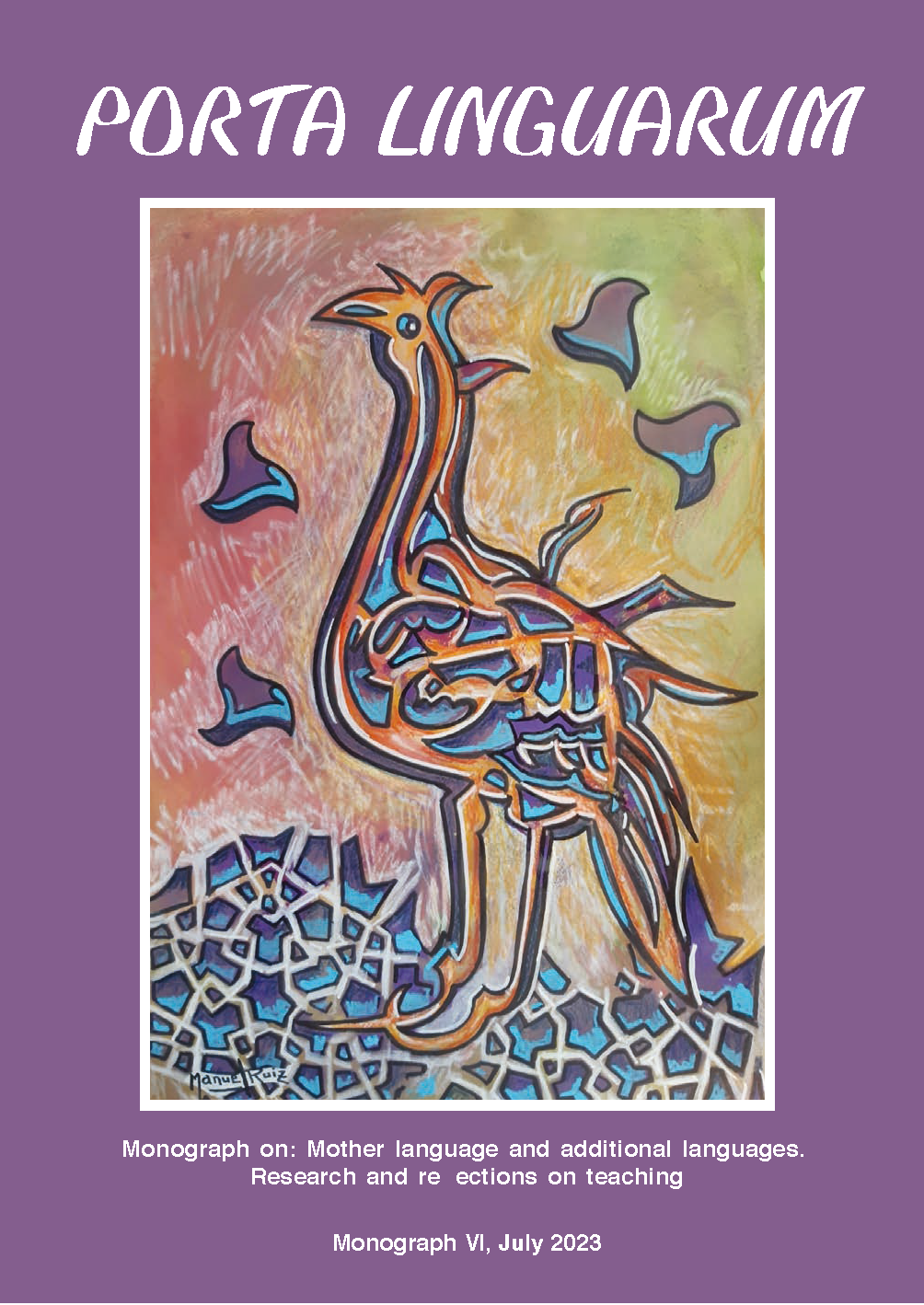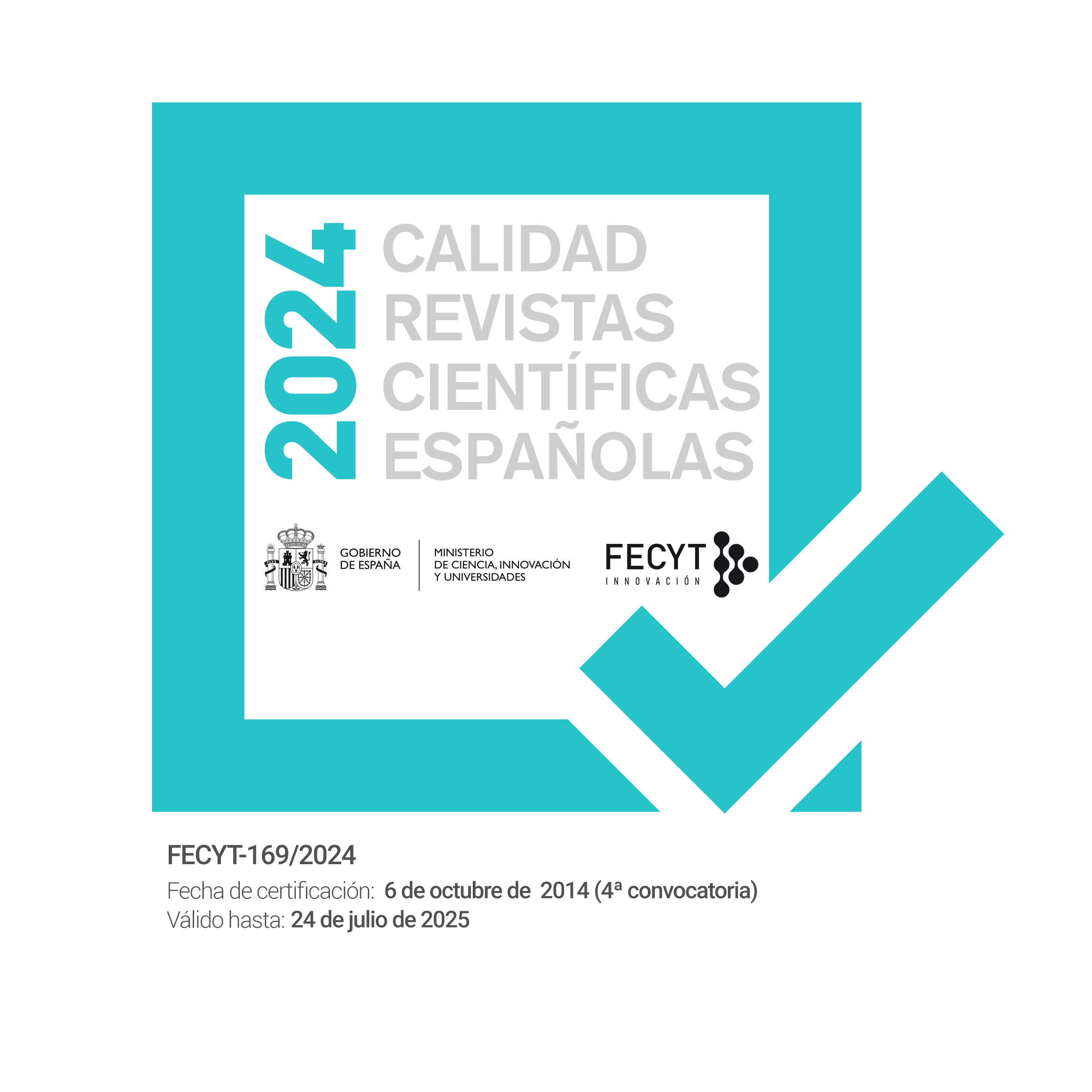Inclusive Spanish second language teaching from a practical experience
DOI:
https://doi.org/10.30827/portalin.viVI.28693Keywords:
Spanish as foreign language, theatre practice, inclusive didacticsAbstract
This paper contains two lines of research: on the one hand, it presents the phases and results of a didactic experience developed with university students of Spanish in Spanish Language and Translation courses at the Università degli Studi Roma Tre, using theatrical practice as a pedagogical instrument to achieve and consolidate specific linguistic objectives and formative and transversal objectives; on the other hand, on the proposal of a practical work for the classrooms of the last year of second grade secondary education (students between 17-19 years old) in Italy taking into account the presence of two learners with different characteristics: a learner dyslexic and another visually impaired. The choice of both learners as active agents in the ELE classroom turns out to be a fertile field, both for teacher training and for the inclusion of these learners in the classroom, as well as for the personal growth of all the active agents in the classroom.
Downloads
References
Aufingher Sanclemente, N., Adam Alcocer, A. L., Aguilar Serrano, D. y Prieto Avellaneda, H. (2023). Educación Inclusiva: ¿qué es y cómo hacerla realidad en la escuela, Universitat Oberta di Catalunya. https://blogs.uoc.edu/epce/es/educacion-inclusiva-que-es-y-como-hacerla-realidad-en-la-escuela/Botes,
Austin, J. L. (1962). Como hacer cosas con palabras. Oxford University Press.
Botes, P. (2015). Le performing arts nel curricolo scolastico per l’apprendimento delle lingue straniere, [Tesis de doctoral, Università degli Studi, Roma tre] https://arcadia.sba.uniroma3.it/bitstream/2307/6058/1/Tesi%20Botes%20Philipp.pdf
Consejo de Europa (Ed.) (2018). Marco de Referencia de las Competencias para una Cultura Democrática. Volume 1 y 2. Contexto, conceptos y modelos. https://rm.coe.int/018322-esp-web/1680a969d0
de Miguel Martínez, E. (1972). El teatro de Miguel Mihura, Seconda edizione rivista e aggiornata, Universidad de Salamanca.
Disposizioni integrative e correttive al decreto legislativo 13 aprile 2017, n. 66, recante: “Norme per la promozione dell'inclusione scolastica degli studenti con disabilità, a norma dell'articolo 1, commi 180 e 181, lettera c), della legge 13 luglio 2015, n. 107”. https://www.gazzettaufficiale.it/eli/id/2019/08/28/19G00107/SG
Flórez, L. (2016). Trascendiendo los caminos de la educación inclusiva hacia la inclusión educativa. https://dialnet.unirioja.es/servlet/articulo?codigo=6598318
Florian, L. and Spratt, J. (2013). Enacting inclusion: a framework for interrogating inclusive practice. European Journal of Special Needs Education, Vol. 28, No. 2, pp. 119-35. https://www.tandfonline.com/doi/full/10.1080/08856257.2013.778111
Gobierno Vasco (2016). La inclusión educativa del alumnado con discapacidad visual. Vitoria-Gasteiz: Servicio Central de Publicaciones.González-Grano de Oro, E. (2004). La ‘otra’ generación del 27. El Humor Nuevo español y La Codorniz primera, Polifemo.
González-Grano de Oro, E. (2005). Ocho humoristas en busca de un humor. La otra generación del 27: Mihura, Tono, Herreros, Neville, Jardiel, López Rubio, Perdiguero y Laiglesia, Polifemo.
Hymes, D. H. (1972). “On Communicative Competence”, in J. B. Pride and J. Holmes (eds.) Sociolinguistics. Selected Readings, pp. 269-293.
Jiménez Calderón, F.; Rufat Sánchez, A. (Eds). (2019) Manual de formación para profesores de ELE. SGEL.
Krashen, S. (1982) Principles and Practice in Second Language Acquisition, Pergamon.
Magnani, M. (2002). Il teatro nella glottodidattica: un’esperienza tra teoria e prassi, Linguæ & - Rivista di lingue e culture moderne, 2, pp. 49-65.
Martínez-Liébana, I. (2005). Universidad y discapacidad visual: Un esclarecimiento fenomenológico de sus bases filosóficas y sus elementos esenciales. Revista de Ciencias de la Educación, 203, 483-502.
Mihura, M. (2010). Melocotón en almíbar. Ninette y un señor de Murcia, Austral.
Milici, A. (2019). L’uso di tecniche teatrali nell’insegnamento-apprendimento di unan LS/L2, Cuadernos de Filolología italiana, 26, pp. 57-7
Ministerio de Educación, Cultura y Deporte (2012). La atención al alumnado con dislexia en el sistema educativo en el contexto de las necesidades específicas de apoyo educativo. Eurydice-Redie, Madrid.
MIUR. Bisogni educativi speciali: indicazioni operative. https://www.notiziedellascuola.it/istruzione-e-formazione/news/bisogni-educativi-speciali-indicazioni-operative.
Organización de Cooperación y Desarrollo Económicos (OCDE) (2019a). Relazione di monitoraggio del settore dell’istruzione e della formazione per il 2020. https://op.europa.eu/webpub/eac/education-and-training-monitor-2020/countries/italy_it.html
Searle, J. R. (1969). Speech acts: An essay in the philosophy of language, Cambridge University Press.
Sisti, F. (2000), Lo sviluppo delle abilità orali attraverso la drammatizzazione, Trieste, Edizioni Goliardiche.
Taeschner, T. (1992), Insegnare la lingua straniera con il format, Roma, Anicia
Ufficio di Statistica (2022). I principali dati relativi agli alunni con disabilità”, aa.ss.2019/2020–2020/2021 https://www.miur.gov.it/documents/20182/0/Gli+alunni+con+disabilit%C3%A0+aa.ss.2019-2020_2020-2021.pdf/dd6bc968-2a4a-a887-e61e-293333095ff5?version=1.0&t=1664209031873
UNESCO (2020) Enseñanza inclusiva: Preparar a todos los docentes para enseñar a todos los alumnos. Documento de política 43.



















